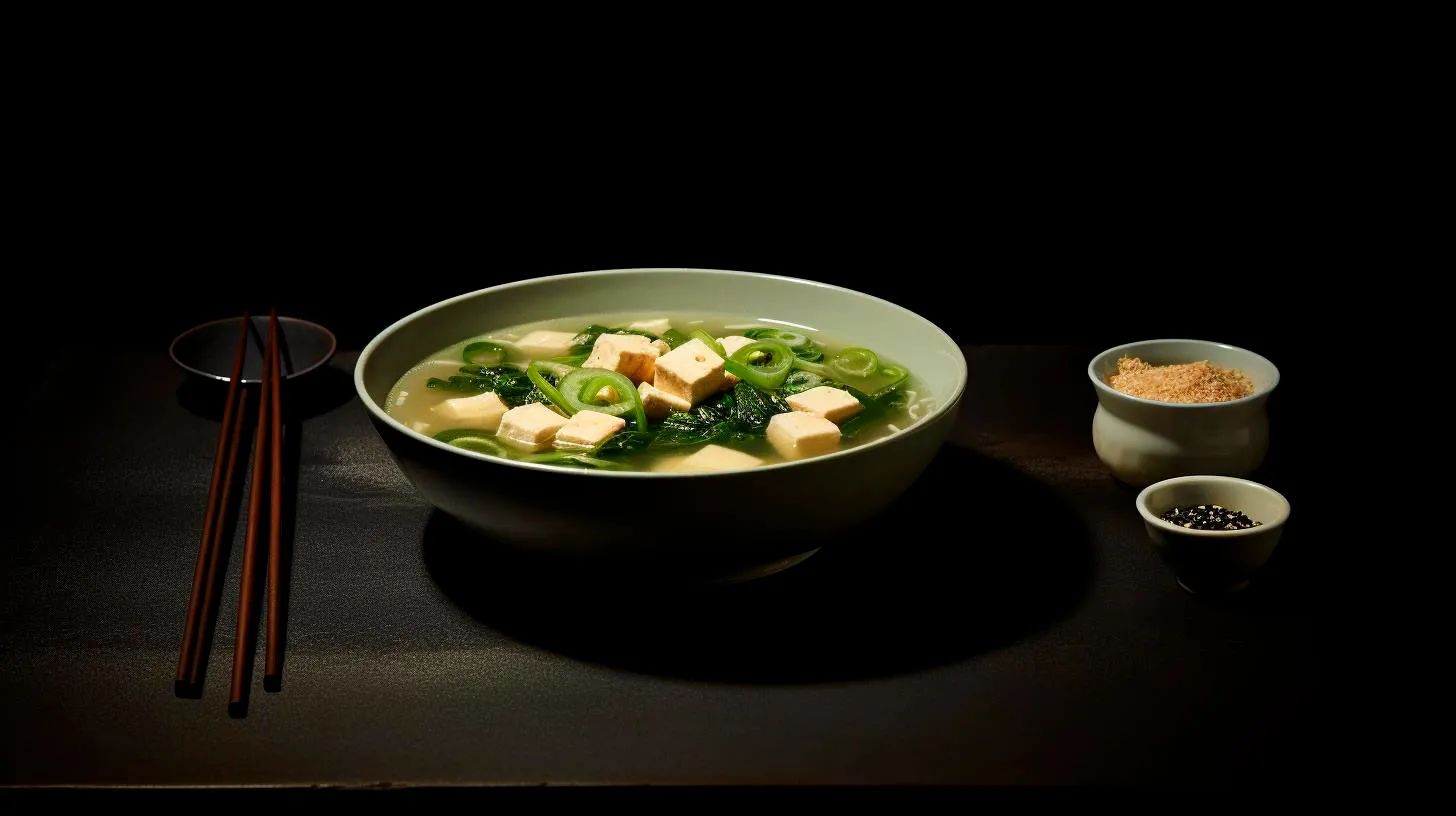Enhancing Health with Mindful Sushi Dining
In this article, we will dive into the world of mindful sushi dining, exploring how it can enhance both our physical and mental well-being.
The Art of Mindful Sushi Dining
Mindful eating is a practice that encourages individuals to fully engage with their food, savor each bite, and pay attention to their body’s cues of hunger and satisfaction. This concept can be easily applied to sushi dining, as it allows us to appreciate the entire experience of eating sushi, from the preparation to the actual consumption.
When practicing mindful sushi dining, it is important to engage all our senses. By carefully observing the ingredients and artistic presentation of each piece, we can truly appreciate the craftsmanship behind sushi making. Taking note of the flavors, textures, and aromas can also enhance the dining experience and create a deeper connection with the food we are consuming.
Here are some key takeaways for enhancing health with mindful sushi dining:
- Mindful sushi dining encourages a slower pace of eating, promoting better digestion and satiety.
- Being present in the moment while eating sushi allows us to enjoy the flavors and textures to their fullest extent.
- Engaging our senses and observing the fine details of each sushi piece can cultivate a deeper appreciation for the culinary art.
The Health Benefits of Sushi
In addition to the mindful aspect of sushi dining, this Japanese delicacy also offers several health benefits. Sushi is typically made with a combination of rice, fish or seafood, vegetables, and seaweed, which are all nutrient-rich ingredients. The following are some of the advantages of incorporating sushi into a well-balanced diet:
- Rich in Omega-3 Fatty Acids: Fish such as salmon and tuna present in sushi are excellent sources of omega-3 fatty acids, which contribute to heart health and brain function.
- Packed with Protein: Sushi provides a healthy dose of protein, essential for muscle growth, repair, and overall body function.
- Low in Calories and Fat: Sushi rolls are generally low in calories and contain minimal amounts of saturated fat, making it a great option for those aiming to maintain or lose weight.
- Abundance of Antioxidants: Seaweed and various vegetables used in sushi are rich in antioxidants, which protect the body against harmful free radicals and reduce the risk of chronic diseases.
Choosing Healthy Sushi Options
While sushi itself offers numerous health benefits, it is essential to be mindful of the choices we make at the sushi bar. Opting for healthier sushi rolls and ingredients can further enhance the nutritional value of this already healthy dish. Here are some tips for choosing healthier sushi options:
- Focus on Nigiri or Sashimi: Nigiri sushi, which consists of a slice of raw fish placed over a small portion of rice, or sashimi, which is thinly sliced raw fish without rice, are great choices as they minimize the consumption of carbohydrates from rice.
- Include Vegetarian Rolls: Incorporating vegetarian rolls, such as avocado or cucumber rolls, can provide additional fiber and nutrients while reducing the overall calorie intake.
- Limit Tempura or Cream Cheese Fillings: Tempura or cream cheese-filled sushi rolls may add unnecessary calories and unhealthy fats. Opt for rolls with fresh ingredients and minimal added sauces.
- Opt for Brown Rice: Some sushi restaurants offer the option of brown rice instead of white rice. Brown rice is a whole grain rich in fiber, vitamins, and minerals.
The Mind-Body Connection
Incorporating mindful sushi dining into our regular eating habits not only benefits our physical health but also nurtures the mind-body connection. By being present and tuned in to our body’s needs, we become more aware of hunger and fullness cues. This practice can lead to healthier eating habits, reduced stress levels, and a greater appreciation for the food we consume.
In conclusion
Mindful sushi dining offers a holistic approach to enjoying this popular cuisine. By engaging our senses, appreciating the artistry, and choosing nutritious sushi options, we can enhance our health and overall well-being. So, the next time you sit down for sushi, remember to savor each bite, be present in the moment, and nourish your body and mind with this delicious and beneficial meal.
The Importance of Traditional Sushi Etiquette
Traditional sushi etiquette plays a crucial role in enhancing the overall dining experience. Whether you are a sushi aficionado or a newbie to this Japanese delicacy, understanding and practicing proper sushi etiquette is key. In this article, we will explore the significance of traditional sushi etiquette and why it should be valued and respected.
The Basics of Sushi Etiquette
Before diving into the reasons behind the importance of sushi etiquette, let’s go over some basic rules that one should follow when dining on this delicacy:
- Use chopsticks or your hands: While chopsticks are the most common method of eating sushi, it is important to note that it is also perfectly acceptable to eat sushi with your hands. However, be sure to avoid excessive touching of the sushi pieces.
- Don’t dip rice-side down: When dipping your sushi in soy sauce, avoid dipping the rice-side down. This prevents the rice from absorbing too much soy sauce, which could overpower the delicate flavors of the fish.
- Eat in one bite: Sushi is typically bite-sized, and it is customary to eat each piece in one bite. This ensures that you experience the harmonious blend of flavors as intended by the sushi chef.
- Use proper chopstick etiquette: If using chopsticks, be mindful of how you use them. Avoid pointing them towards others, don’t play with them, and never use them to pass food directly from one person to another.
Respecting Tradition and Culture
One of the key reasons why traditional sushi etiquette holds importance is out of respect for Japanese tradition and culture. Sushi has a rich history that dates back centuries, and it reflects the meticulous craftsmanship and dedication of the sushi chef. By adhering to proper sushi etiquette, you show appreciation for the artistry involved in creating this culinary masterpiece.
Respecting Japanese culture also extends to the way sushi is presented and consumed. The intricate arrangement of sushi on the plate showcases the balance of colors, textures, and flavors carefully chosen by the chef. The act of carefully selecting and savoring each piece demonstrates an appreciation for the craft and quality of the ingredients used.
Enhancing the Dining Experience
Additionally, practicing traditional sushi etiquette enhances the overall dining experience. By following these customs, you can fully immerse yourself in the moment and fully appreciate the flavors and textures of each bite. The attention to detail in the preparation of sushi is meticulously carried through in the etiquette associated with eating it. The precise execution of each action, from dipping the sushi to the way it is consumed, allows you to truly connect with the food and fully enjoy the experience.
Moreover, observing proper sushi etiquette helps create a harmonious and respectful atmosphere in the sushi restaurant. It shows consideration for others in the dining room and allows everyone to enjoy their meal in a serene and enjoyable environment.
Key Takeaways
Understanding and practicing traditional sushi etiquette is not only a sign of respect for Japanese culture and tradition, but it is also a way to elevate your dining experience. Here are some key takeaways to remember:
- Sushi etiquette showcases your respect for Japanese tradition and culture.
- Respecting the presentation and consumption of sushi reflects the craftsmanship of the chef.
- Proper etiquette enhances the overall dining experience and allows you to fully appreciate the flavors.
- Observing sushi etiquette creates a pleasant dining atmosphere for all guests.
So the next time you indulge in a plate of delicious sushi, remember that it is not just about the food—it is about embracing and respecting the traditions and customs that have shaped this exquisite culinary art.
The Surprising Wellness Benefits of Sushi Etiquette
But did you know that practicing sushi etiquette not only enhances your dining experience but also offers surprising wellness benefits?
In this article, we will explore the lesser-known advantages of adhering to sushi etiquette and how it can contribute to your overall well-being.
1. Mindfulness and Relaxation
Sushi dining is not just about satisfying your taste buds; it is an experience that engages all your senses. The act of meticulously selecting each piece, observing the presentation, and savoring the flavors encourages mindfulness and relaxation. By focusing on the present moment, you promote a sense of calmness and reduce stress levels.
- Practice mindfulness by paying attention to details in sushi presentation.
- Take deep breaths while enjoying your meal to enhance relaxation.
- Engage in conversation with your dining companions to foster social connections.
2. Portion Control and Healthy Eating Habits
Japanese cuisine, including sushi, emphasizes balance and portion control. Unlike other cuisines that promote large portions, sushi encourages moderation, offering bite-sized servings. By following sushi etiquette, you learn to enjoy smaller portions and listen to your body’s hunger cues, which can help prevent overeating and maintain a healthy weight.
- Savor each piece of sushi slowly to improve digestion and satiety.
- Focus on the quality and freshness of ingredients rather than quantity.
- Opt for sashimi or nigiri instead of tempura or fried rolls to reduce calorie intake.
3. Improved Digestion and Gut Health
The ingredients used in sushi, such as raw fish, seaweed, and fermented soy, can benefit your digestive system and promote gut health. The combination of vinegar-infused rice and fermented soy products like soy sauce and miso soup aids in digestion and supports the growth of beneficial gut bacteria.
- Seaweed, a common ingredient in sushi, is rich in fiber and promotes a healthy digestive system.
- Wasabi, a condiment served with sushi, possesses antimicrobial properties that can combat potential foodborne illnesses.
- Select sushi with probiotic-rich fillings like pickled vegetables or fermented fish to support gut health.
4. Omega-3 Fatty Acids for Heart Health
The inclusion of fatty fish like salmon, tuna, and mackerel in sushi brings additional health benefits. These fishes are rich in omega-3 fatty acids, which have been shown to support heart health, reduce inflammation, and lower the risk of chronic diseases.
- Opt for sushi options with fatty fish to increase your omega-3 intake.
- Omega-3 fatty acids have been linked to improved brain health and memory function.
- Choose sushi made with brown rice for extra fiber and nutrients.
Key Takeaways
By embracing sushi etiquette, you not only deepen your appreciation for this culinary art but also enjoy several surprising wellness benefits. The mindfulness and relaxation fostered by sushi dining contribute to overall mental well-being. The portion control and balance associated with sushi promote healthy eating habits and support weight management. The ingredients and composition of sushi improve digestion and contribute to a healthy gut. Lastly, the inclusion of fatty fish in sushi enhances heart health through omega-3 fatty acids.
Next time you indulge in this Japanese delicacy, remember to savor each bite, follow the centuries-old traditions, and relish the hidden wellness benefits that await!
Sushi Etiquette: A Gateway to Better Health
However, before indulging in this culinary delight, it is important to understand the manners and etiquette associated with sushi consumption. By adhering to these traditions, not only will you enhance your dining experience, but you will also gain a deeper appreciation for the culture behind this beloved dish.
1. Proper Use of Chopsticks
When enjoying sushi, it is essential to use chopsticks correctly. Holding chopsticks correctly not only shows respect for the food but also prevents any mishaps during the meal. Follow these simple rules:
- Hold the chopsticks towards the end, not in the middle.
- Avoid pointing your chopsticks towards others at the table.
- Do not use chopsticks to pass food directly to another person’s chopsticks; instead, utilize a shared plate if needed.
- Rest your chopsticks on the hashi-oki (chopstick rest) provided, if available. If a rest is not available, place them parallel to yourself on the edge of a plate.
2. Condiments Usage
While sushi may be served with various condiments such as soy sauce, wasabi, and pickled ginger, it is important to consume these condiments in moderation to truly appreciate the flavors of the sushi. Remember:
- Dip sushi lightly into the soy sauce, ensuring that the rice does not soak up an excessive amount.
- Avoid mixing wasabi directly into the soy sauce; instead, place a small amount of wasabi on top of the sushi if desired.
- Use pickled ginger to cleanse your palate between different types of sushi for optimal taste.
3. Eating Order
Sushi is usually served in a specific order to fully appreciate its flavors and textures. Follow these guidelines:
- Start with milder-tasting sushi and progress to stronger flavors.
- Begin with white fish such as flounder, halibut, or snapper, and then move on to fatty fish like tuna or salmon.
- Save stronger-tasting rolls with ingredients such as eel or spicy tuna for the end.
4. Proper Sushi Handling
When handling sushi, it is crucial to do so with care and respect. Consider the following tips:
- Avoid squeezing or pressing the sushi excessively, as it may damage the sushi or cause it to become misshapen.
- Do not bite the sushi in half; instead, consume it in one bite. However, if the sushi is too large, it is acceptable to eat it in two bites.
- If necessary, use your hands to eat sushi instead of chopsticks. This is particularly appropriate for nigiri sushi.
Key Takeaways
- Understanding sushi etiquette can enhance your dining experience and show respect for Japanese culture.
- Proper use of chopsticks is essential to avoid any mishaps during the meal.
- Consuming condiments in moderation allows you to fully savor the flavors of the sushi.
- Enjoy sushi in a specific order to appreciate the different tastes and textures.
- Handle sushi with care and avoid damaging it while eating.
In conclusion, sushi etiquette is not only a way to demonstrate respect for Japanese culture but also a gateway to a healthier dining experience. By following these traditions and guidelines, you can fully appreciate the flavors, textures, and health benefits of sushi. Enjoy your sushi with confidence and immerse yourself in the rich culinary world of Japan!



